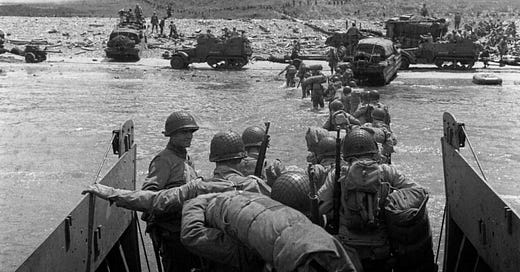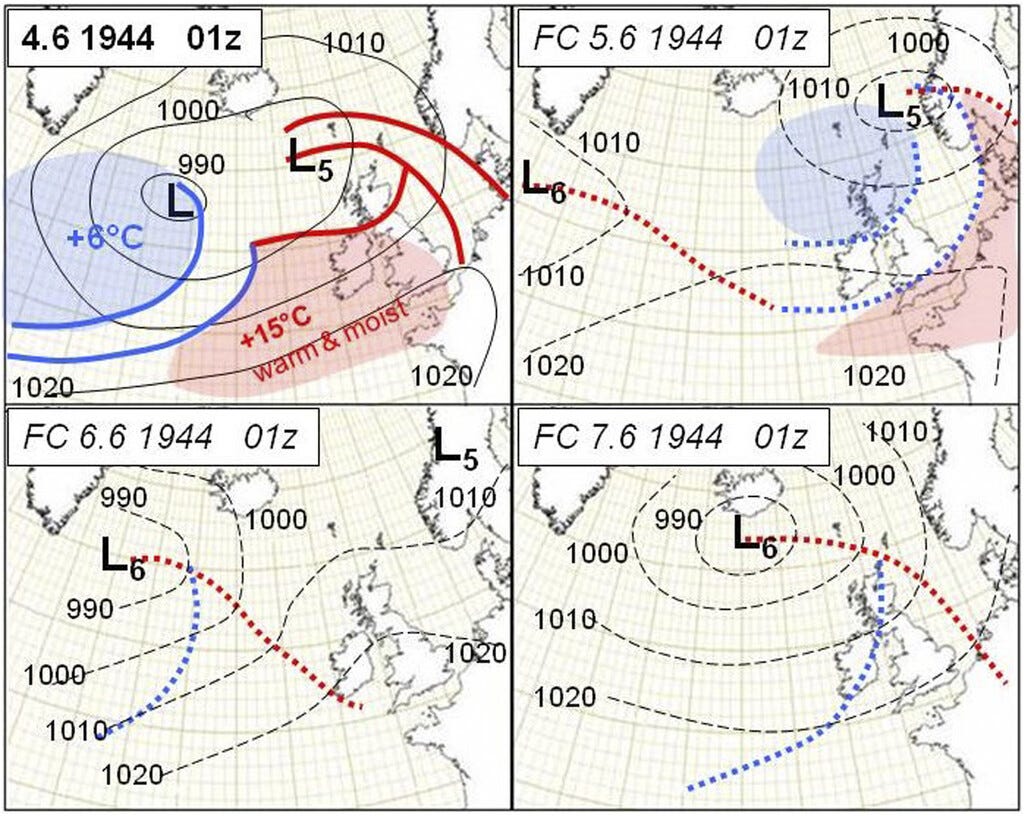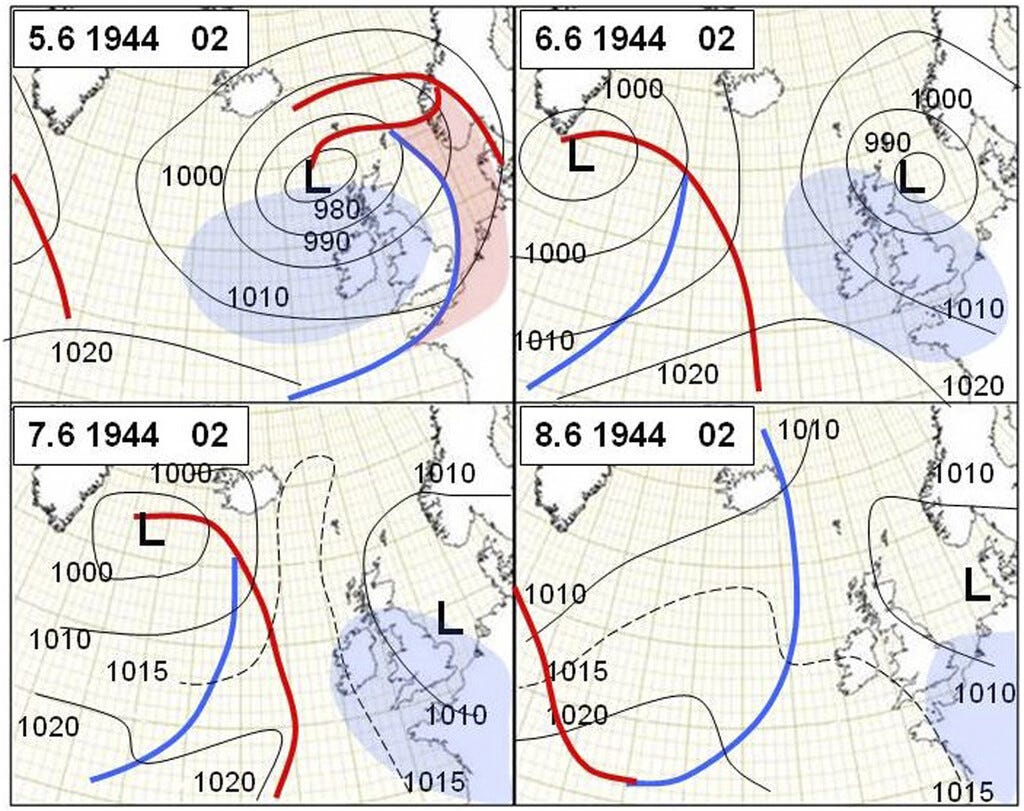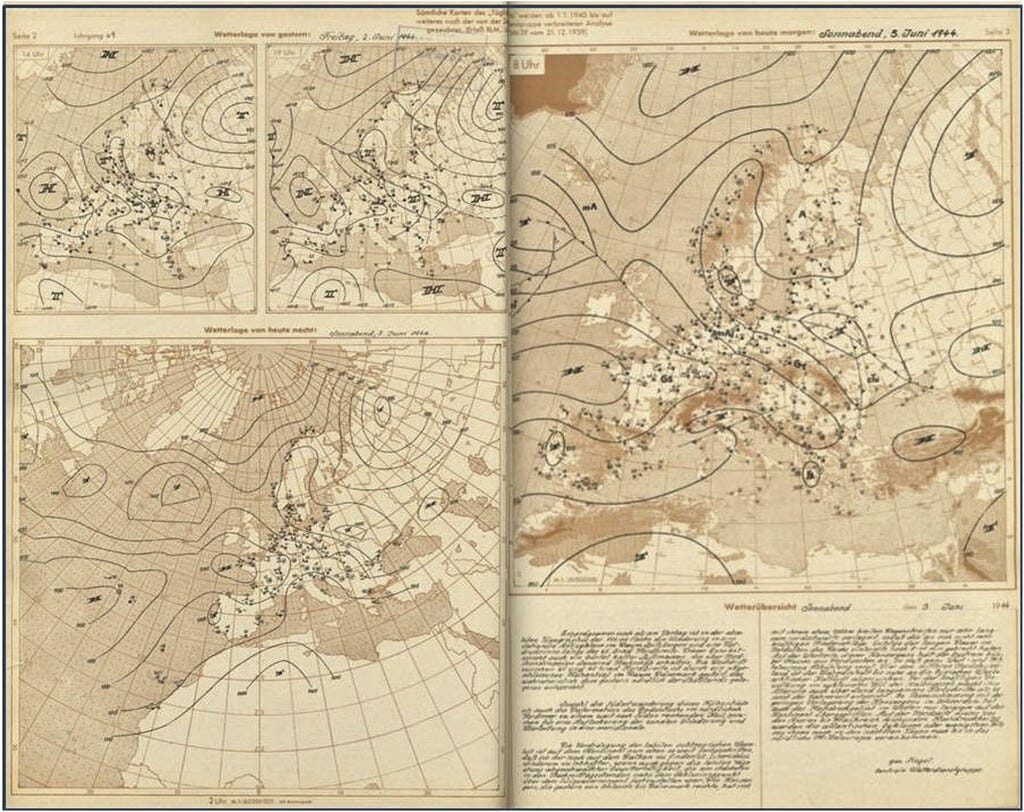The Strategic Weather Decision of June 4th, 1944
Everyone knows the D-Day invasion was June 6th but the real decision was made two days prior based heavily on weather reports.
On the evening of Sunday, June 4, 1944, the Allied Forces gathered along the southern coast of England, poised for one of the most significant military operations in modern history: the invasion of Normandy. Comprising American, British, Canadian, and other Allied forces numbering in the hundreds of thousands, the troops awaited the order to cross the English Channel and confront the heavily fortified German Atlantic Wall. The timing of this operation was critical, hinging on a narrow window of favorable weather conditions. British meteorologists, led by Group Captain James Stagg, convened with Allied commanders, meticulously analyzing analog weather data from surface maps and hand-drawn pressure charts. Their goal was to identify a brief period of fair conditions when the tides and seas would permit a successful assault.
The Key Weather Systems
The meteorological situation was complex, with multiple weather systems influencing conditions across the region. Meanwhile, another low-pressure system (L5) in the English Channel was projected to pass toward Norway. A transient ridge of high pressure, supported by the Azores High extending into the Atlantic coast, was anticipated to emerge between L5 and L6. This ridge was expected to temporarily stabilize the atmosphere, reducing wind speeds and improving conditions over the Channel.
Based on this analysis, Stagg and his team predicted a "window of opportunity" for fair weather on the morning of June 6th. The critical forecast, presented to General Dwight D. Eisenhower on June 4th, gave the assurance needed to proceed with the operation.
Caption: The Forecasted Position of the two key systems according to phone conversations between Allied Meteorologists on June 4th, 1944
Caption: Actual positions of the two lows based on conversations and records from Allied meteorologists after the invasion.
Caption: These are German forecast maps of the synoptic situation from June 4th through the 7th. The Germans, ironically, had better forecasts than the Allies mainly from their interception of Allied analysis. Yet, they believed the Allies would never attack in poor weather conditions.
The Result
Despite the meteorologists' careful predictions, the actual weather on June 6 deviated from expectations. The L6 system veered over the British Isles and into the North Sea, causing stronger-than-forecast winds and choppier seas over the Normandy beaches. These adverse conditions created significant challenges during the initial landings. Choppy waters and high waves impeded the deployment of troops, with many soldiers struggling to reach the shore and much of the armored equipment sinking before it could be offloaded.
However, as the day progressed, conditions improved. The visibility cleared, and the seas became calmer, allowing more troops, equipment, and supplies to reach the beaches. The Allies gradually overcame the initial chaos, forcing the German defenders into a slow but steady retreat. By the end of the first day, the beachheads had been established, marking the beginning of a sustained campaign that ultimately led to the liberation of France and the end of the war in Europe within a year.
The D-Day invasion underscores the profound impact of weather forecasting on military strategy. While the meteorological predictions for June 6th were not entirely accurate, the decision to proceed based on Stagg’s forecast proved pivotal. The operation exemplifies the delicate interplay between human judgment, scientific analysis, and the unpredictable nature of the environment in shaping the course of history
Source Information for this piece was obtained from:
Persson, Anders. “Right for the Wrong Reason?: A New Look at the 6 June 1944 D-Day Forecast by a Neutral Swede.” AMETSOC, American Meteorological Society, 1 July 2020, journals.ametsoc.org/view/journals/bams/101/7/bamsD180311.xml#:~:text=The%20commander%20in%20chief%2C%20Dwight,a%20stormy%20and%20unsettled%20spell.






